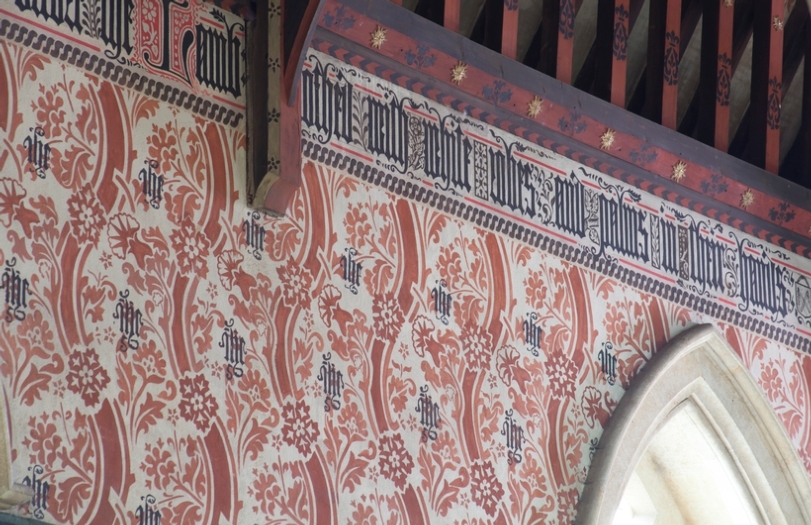Sacred style at All Saints' Cambridge
All Saints stands opposite the gates of Jesus College, Cambridge, its pale stone spire a prominent city landmark. It was built in the 1860s to the plans of the famous 19th-century architect G.F. Bodley and is a triumph of Victorian art and design. The church features work by leading Arts and Crafts artists, including William Morris, Edward Burne-Jones and Ford Madox Brown. The walls and ceiling are a blast of colour, with almost every surface stencilled or painted with dramatic patterns.
The designs of William Morris are inextricably linked to the curving sinuous arabesques of traditional Islamic Art and this link was celebrated recently with a craft event called 'Sacred Style'.
Ryan Castle, Heritage Learning Officer for The CCT said “We were delighted that so many people came along and took part in our event. It’s fascinating to discover how east and west have fused in the beautiful decorations of All Saints Church - people were amazed to discover the origins of these well-known designs.”
Visitors took part in tile making and fabric printing with artists and experts from 'The Art of Islamic Pattern' and The William Morris Gallery.
Morris was inspired by Turkish ceramics and Persian carpets to create a new movement in British design. For him the Muslim world had managed to preserve the art of the craftsman and avoid the ills of industrial production. However, his admiration went beyond the surface - Morris was influenced by Islamic ideas of what art should be. His famous advice to "have nothing in your house that you do not know to be useful, or believe to be beautiful," echoes the Muslim saying in the Koran that "God is beautiful and loves beauty". Morris's artistic ideas including his love for nature, the use of repetition and symmetry, belief in everyday beautiful objects and emphasis on craft are essential Islamic artistic ideals too.

